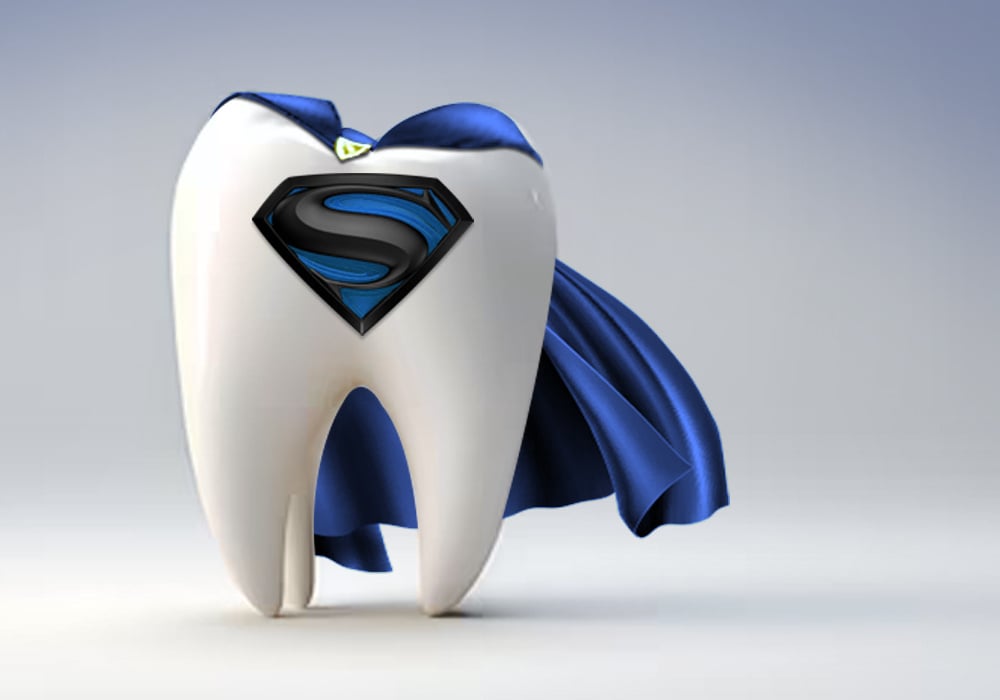Treating The “Mature” Adult - Dr. Bill Paveletz' on 'A Tale of Two Hygienists' Podcast
VOCO is thrilled to introduce a podcast that's a must-listen for every dental hygienist seeking to enhance their professional knowledge while being...
14 min read
VOCO America Inc : 07/196/2025

Fluoride varnish has long been a mainstay in preventive dentistry. It’s a professionally applied, high-fluoride coating that adheres to tooth surfaces and slowly releases fluoride to strengthen enamel. In the United States, fluoride varnish is widely used on patients of all ages – from young children getting their first teeth to older adults with root exposure. Dental organizations have endorsed its use for decades. In fact, the American Dental Association (ADA) recommends a 5% sodium fluoride (NaF) varnish (containing 2.26% fluoride) at least twice yearly for children and adolescents as an effective caries prevention measure¹. The same concentration varnish is advised for adults at risk of root caries¹. This strong professional support exists because fluoride varnish is both effective and practical: it delivers a potent dose of fluoride in a quick application, with minimal ingestion risk and sustained contact with the teeth².
Yet, in modern times, questions occasionally arise: with so many advancements in dental materials, does the fluoride concentration in varnish still matter as much as we think? Some argue that frequency of application or added ingredients are more important than the fluoride percentage. New varnish products have even emerged with lower fluoride concentrations, claiming equal benefit. It’s worth examining the evidence and innovations to understand why the concentration of fluoride in varnishes remains a critical factor for efficacy.
Fluoride Varnish Basics: High Concentration, Low Volume
Fluoride varnish was first introduced in the 1960s as a solution to keep fluoride in contact with teeth for longer periods³. Traditional fluoride gels and foams had to be held in trays or spat out to avoid swallowing; varnish, by contrast, could be painted on and left to dry, reducing ingestion and prolonging fluoride exposure. From the outset, these varnishes contained high fluoride concentrations. The original product (Duraphat, 1964) used 5% sodium fluoride, equivalent to 22,600 ppm fluoride³. To put that in perspective, fluoride toothpaste is about 1,000 ppm, so varnish is over 20 times stronger. This high concentration is applied in very small amounts (typically 0.2–0.5 mL per patient), which is why it’s effective without being hazardous. As one researcher aptly noted, varnishes allow delivery of high fluoride levels in a small dose, combining effectiveness with relative safety and easy application². Most varnish formulations on the market today still use 5% NaF as the standard, yielding about 22.6 mg of fluoride per mL of varnish³.
The mechanism by which fluoride varnish prevents decay is well-understood. The varnish sets on the teeth and acts as a reservoir, releasing fluoride ions over time. Those fluoride ions integrate into the enamel, promoting the formation of fluorapatite (a harder, more acid-resistant mineral) and precipitating calcium fluoride on the enamel surface. These fluoride reservoirs can later re-release fluoride during acid attacks, helping to remineralize early lesions⁴. Because the varnish sticks to teeth for several hours (or even overnight), it ensures a prolonged contact time between fluoride and enamel, which is a key factor in its cariostatic effect. Studies have consistently shown that fluoride varnish applications, especially in patients at elevated caries risk, lead to significant reductions in decay incidence over time². The treatment is simple enough that not only dentists and hygienists, but even pediatricians in medical offices, apply varnish for young children as part of preventive health visits.
Crucially, despite containing a high concentration of fluoride, varnish has an excellent safety record. Once applied, it hardens quickly upon contact with saliva into a sticky film. This means very little fluoride could be swallowed compared to other topical treatments (like foams or rinses) where the fluoride is loose in the mouth⁵. The fast-setting nature of varnish limits systemic absorption of fluoride⁵. Consequently, the risk of acute fluoride toxicity or fluorosis from professional varnish does not exist when used as directed. Care is taken to use only a tiny amount per application, and parents are typically advised not to brush the child’s teeth until the next day, by which time most of the varnish has worn off and its fluoride absorbed into the teeth. The bottom line is that a 5% NaF varnish delivers a powerful dose of fluoride right where it’s needed – on the enamel – in a safe and controlled manner. This foundational concept has not changed, even as varnish products have evolved in other ways.
Modern Varnish Innovations: Beyond the Basics
In recent years, manufacturers have introduced a variety of “modern” fluoride varnishes with tweaks to the traditional formula. Not all fluoride varnishes are identical, even if they share the 5% NaF label. Here are a few advancements and differences found in today’s varnish products:
Clearly, there is no shortage of creativity in varnish development. From a practice management perspective, such as for a Dental Service Organization (DSO) evaluating products, these differences can be important. Features like ease of use, patient acceptance, and even cost (unit-dose vs. bottle, flavored or not, etc.) come into play. However, amid all these enhancements, one core question remains: does the fluoride concentration itself need to remain high, or could a lower concentration varnish work just as well? Modern product marketing sometimes downplays concentration, highlighting instead their special additives or delivery mechanisms. To answer whether fluoride concentration still matters, we have to look at the science of how fluoride varnish works and what research tells us about different concentrations.
The Case for Concentration: Why More Fluoride (to a Point) Matters
Fluoride concentration is essentially about how much fluoride is available to interact with the tooth during the time the varnish is on. All else being equal, a higher concentration means more fluoride ions can potentially penetrate the enamel and get incorporated into the tooth. It’s reasonable to ask: if a varnish stays on the tooth for hours, could a weaker fluoride dose do the same job given enough time? Researchers have explored this very question over the years, and the results are illuminating.
Historical Perspective: Interestingly, not long after the introduction of 5% NaF varnish, an alternative low-fluoride varnish was developed. In 1975, a product called Fluor Protector was introduced using only 0.1% fluoride (a fluorsilane compound) as the active ingredient⁶. This is a tiny fraction of the typical fluoride content – equivalent to just 1 mg fluoride per mL (versus 22.6 mg/mL in the standard 5% NaF)⁶. The rationale was likely to minimize fluoride ingestion and any potential side effects, but unsurprisingly, such a low concentration did not gain broad popularity for caries prevention. In fact, studies later indicated that a 0.1% fluoride varnish was significantly less effective at remineralizing enamel compared to higher concentrations⁷. The early lesson was that yes, you need a sufficiently high fluoride level in the varnish to achieve the desired anti-caries effect.
Clinical Trials of Lower Concentration: The more nuanced debate is whether concentrations somewhat lower than 5% NaF (but higher than that extreme 0.1%) could be “good enough.” In other words, is there a threshold beyond which extra fluoride doesn’t add much benefit? A key study on this was a clinical trial by Seppä et al. in the 1990s, which directly compared a standard 2.26% fluoride varnish (5% NaF) to a half-strength 1.13% fluoride varnish in a group of schoolchildren. Over a 3-year period, children received the varnish (whichever concentration they were assigned) three times annually. The outcome was somewhat surprising: there was no statistically significant difference in caries increment between the two groups⁸. The group treated with the high-concentration varnish had essentially the same number of new cavities as the group treated with the lower-concentration varnish (5.5 vs. 5.7 decayed surfaces, on average)⁸. The researchers concluded that if any efficacy difference exists, it’s very small – on the order of maybe half a tooth surface saved per year, which was not significant in their sample⁸. They even suggested that lowering the fluoride concentration of varnish for children might be worth considering, since the higher concentration did not show markedly better results⁸.
This trial aligns with a concept in cariology that enamel has a saturation point for fluoride uptake. Once a certain level of fluoride is in contact with the enamel, the enamel crystals absorb as much fluoride as their structure will allow (especially at the binding sites on hydroxyapatite). Beyond that point, extra fluoride might simply precipitate onto the surface or be wasted. Some in vitro studies support this idea. For example, one laboratory study (Karlinsey et al., 2013) found that a 2.5% NaF varnish was able to saturate the binding sites on hydroxyapatite discs just as effectively as a 5% NaF varnish, indicating that 2.5% may be an optimal concentration for fluoride uptake in those conditions⁷. In another experiment, researchers compared multiple applications of different concentrations in a short period: applying 5% NaF varnish three times in a week vs. 2.5% NaF varnish three times in a week vs. single applications. They observed that three coats of 5% was only slightly more effective in remineralizing enamel than three coats of 2.5%, and a single application of 5% versus 2.5% showed no significant difference in enamel hardening⁷. Notably, the worst performer in that study was a 0.1% fluoride solution (consistent with the earlier point that extremely low fluoride doesn’t do much)⁷. These results suggest diminishing returns for fluoride concentration above a certain level – in other words, a well-applied 2.5% varnish might achieve essentially the same enamel fluoride uptake as a 5% varnish, at least under ideal conditions.
New Low-Concentration Products: Building on such evidence, some manufacturers have indeed formulated varnishes with lower fluoride concentrations as a selling point. A prominent example is FluoriMax™, which contains 2.5% NaF (11,300 ppm fluoride) instead of the typical 5% NaF (22,600 ppm fluoride). The makers of FluoriMax cite research on enamel fluoride saturation, asserting that their 2.5% formulation is “not less effective” than the 5% formulations⁶. They achieved this by also redesigning the varnish base: FluoriMax is colophony-free (using shellac), which allows it to dry ultra-thin and release fluoride more readily, supposedly giving equal or greater fluoride uptake with half the fluoride content⁶. The potential advantages are a lower total fluoride dose per application (which could be safer for very small children or in cases where multiple fluoride sources combine) and a more pleasant patient experience (since it’s thinner and not as sticky). According to product literature and preliminary studies, a 2.5% NaF varnish can deliver comparable fluoride to the teeth as a 5% NaF varnish by making the delivery more efficient⁷.
With all this said, one might wonder if high fluoride concentration is becoming an outdated concept. If 2.5% works just as well, why haven’t we switched universally? The answer lies in cautious interpretation of the data and the realities of clinical practice:
In summary, fluoride concentration still matters in modern varnishes, but with some qualifications. Extremely low concentrations (like 0.1%) are definitely less effective and not used for caries prevention. Moderately lower concentrations (around 1–2.5%) might perform similarly to 5% under ideal conditions, but the evidence is not yet strong enough to completely replace the standard. The concentration is one of several factors – including frequency of application, varnish adherence, fluoride release profile, and patient risk status – that together determine the outcome. As research continues, we may find the optimal balance of concentration and application strategy. Until then, dentistry continues to largely “go with what works”: applying a highly concentrated fluoride varnish at regular intervals, and leveraging new product features to enhance that fluoride’s effect.
Best Practices for Varnish Use in the Modern Clinic
To wrap up, here are some practical tips and considerations for dental professionals and purchasing managers when evaluating fluoride varnishes, keeping in mind the importance of fluoride concentration:
Conclusion
Fluoride varnish is a prime example of a “tried and true” preventive measure in dentistry that has adapted with the times. Today’s varnishes are more comfortable and come with various enhancements, but they all serve the same fundamental purpose: delivering fluoride to the teeth. Fluoride concentration remains a cornerstone of that purpose. A high concentration of fluoride is what makes varnish a powerful anti-caries tool in the first place, and current evidence indicates that we shouldn’t rush to dilute our varnishes without good cause. While emerging products show that lower concentrations can work under certain conditions, the consensus is that maintaining a robust fluoride level in varnish is a smart way to ensure efficacy across diverse real-world scenarios.
For dental professionals and organizations, the message is clear: continue to prioritize fluoride potency when selecting and using varnishes. Evaluate new varnish products critically – look for data demonstrating that they release sufficient fluoride and actually improve outcomes, not just marketing claims. And above all, keep using fluoride varnish as part of a comprehensive preventive strategy. When used appropriately, fluoride varnish (at any reasonable concentration) is safe, well-tolerated, and provides an important layer of protection against tooth decay. It’s one of the few interventions that is relatively easy, inexpensive, and backed by a solid body of evidence and experience. By combining the best of modern varnish technology with the proven chemistry of fluoride, we can continue to effectively shield our patients’ teeth from caries in the years ahead.
Works Cited

VOCO is thrilled to introduce a podcast that's a must-listen for every dental hygienist seeking to enhance their professional knowledge while being...

GrandioSO, VOCO's universal, light-cured, 89% filled nano-hybrid composite, celebrates its 10-year anniversary in 2022. Its success is a function of...

The recent announcement of the world’s first fully automated dental procedure, performed by a U.S.-based AI company, has certainly captured the...